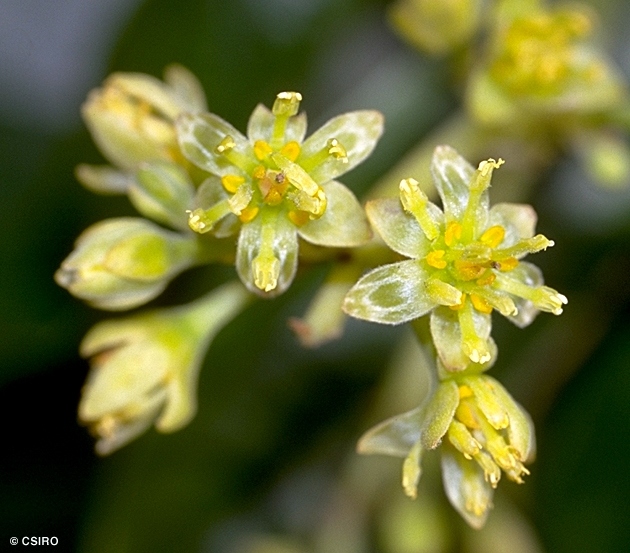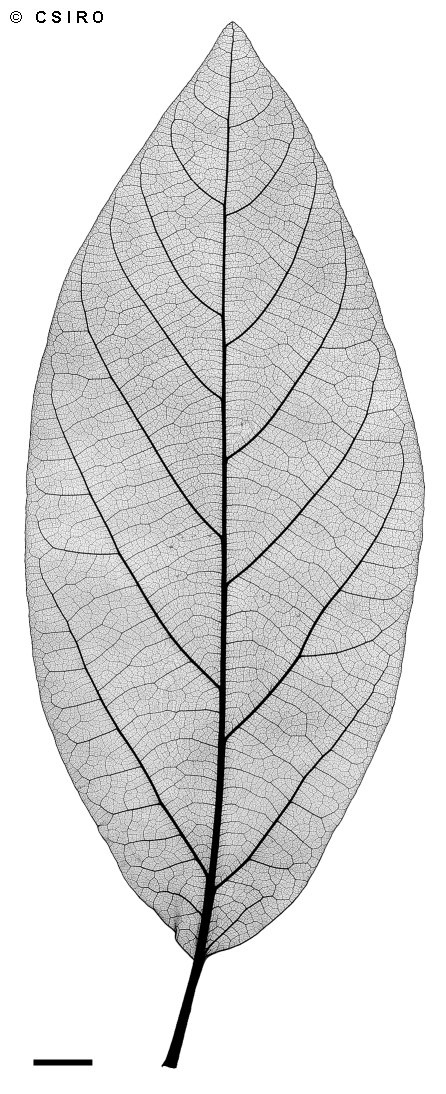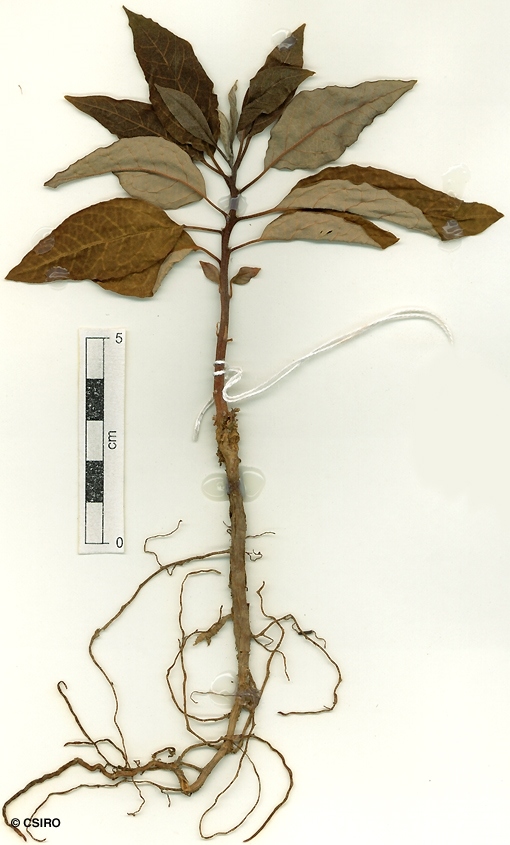Australian Tropical Rainforest Plants - Online edition
Persea americana Mill.





Miller, P. (1768) Gardener's Dictionary Ed. 8 : 441. Type: Tropical America?.
Alligator Pear; Avocado; Avocado Pear; Avocado Tree
Dead bark layered.
First pair of leaves ovate or elliptical, about 45-75 x 18-30 mm, green or slightly glaucous on the underside. At the tenth leaf stage: leaves ovate or elliptic, upper surface with a few pale hairs at least along the midrib; oil dots very small, visible only with a lens; petiole and stem with a few pale prostrate hairs; terminal bud densely hairy. Seed germination time 29 days.
An introduced species originally from Mexico and Central America, widely cultivated in Australia, becoming naturalised in NEQ on parts of the Atherton Tableland. Altitudinal range from 700-1000 m. Grows in rain forest regrowth.
This is the Avocado or Avocado Pear of commerce. This species is occasionally found in the wild on the Atherton Tableland. At first sight it is difficult to envisage any local dispersal agencies. However, dogs (and dingoes) on the Atherton Tableland have developed a taste for the fruit and in some cases they will carry away and bury the seed after consuming the flesh. These buried seeds have been observed to germinate and grow in domestic situations.
The leaves of this species are poisonous Austin, D. F. 1998. Poisonous Plants of Southern Florida. (http://www.fau.edu/divdept/science/envsci/poison- pl.html)
This species has a number of uses. The pericarp is regarded as a tasty delicacy and is a rich source of oil. However, the seeds and leaves are poisonous. (http://squid2.laughingsquid.net/hosts/herbweb.com /herbage/A19613.htm)





